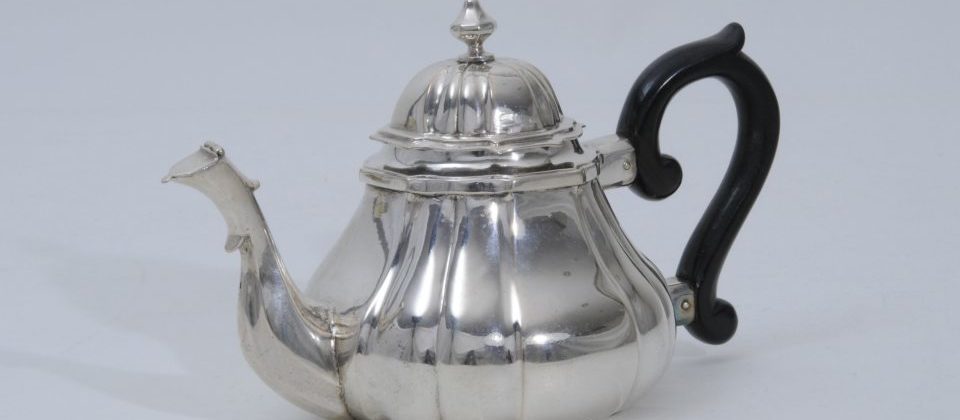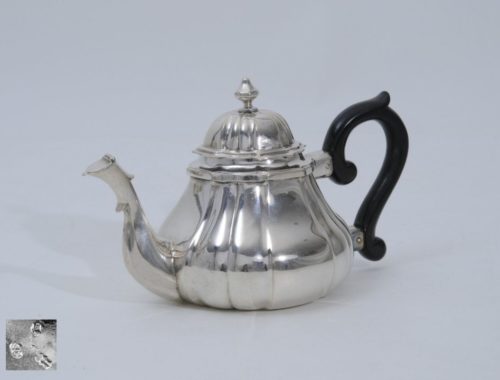Object Number: #524
Marks: Emmerich ca 1730
Maker: Johann Wilhelm Büssing
City hallmark: a bin with handle for Emmerich (Scheffler 1973, no 378c)
Maker’s hallmark: the monogram „WB“ for Johann Wilhelm Büssing (Scheffler 1973, no 387)
Warden’s hallmark: a sceptre alone (Scheffler 1973, no 382a/S. 213)
Dimensions: height: 9 cm (3,5 in.); weight: ca. 275 gr.
Detailed Information
German Silver Teapot
The present object was made in the Hanseatic city of Emmerich on the Rhine (North Rhine-Westphalia) and has a typical form for teapots. The body of the vessel is round, tapering towards the upper part and decorated with gadrooned straight lines. The spout in an S-shape has a hinged lid. The vaulted and with gadroons adorned lid is curved and has a conical, cast finial. The wooden ear shaped, side handle is curved.
Drinking tea was established in Europe around the last quarter of the 17th century. During this time, tea, exactly like coffee and cacao, was almost exclusively prescribed from doctors and was sold in pharmacies. However, these three new warm beverages had conquered the continent by the beginning of the 18th century, through the princely courts and the bourgeoisie. Many new silver objects were developed around these three hot beverages.
Maker
Johann Wilhelm Büssing was born 1693 as the son of Johann and Agnes Smits. He got married on the 3rd June 1721 as a Lutheran silversmith to Susanna Fendt, daughter of the silversmith Johann Wilhelm Fendt, in Emmerich. He died in 1760.
Literatur
Scheffler, W., Goldschmiede Rheinland-Westfalens: Daten – Werke – Zeichen, 1. Halbband (Aachen-Köln), Berlin-New York: De Gruyter, 1973.
Remky, K. & Schäffer, G., Die Ernüchterung des Abendlandes: Kaffee und Tee erobern Europa, Kat. Ausst. 04.12.2010-20.03.2011, Aachen: Couven-Museum, 2010.



